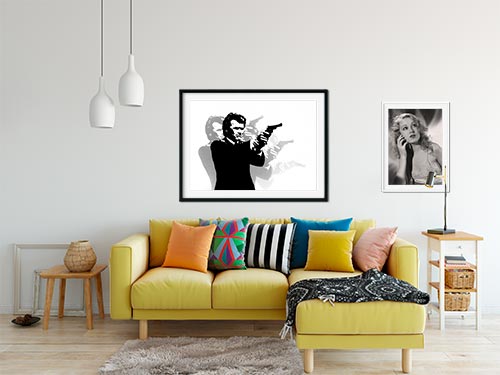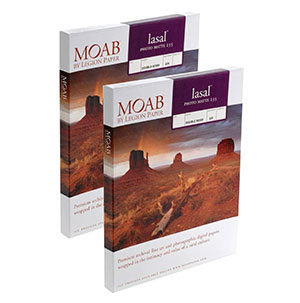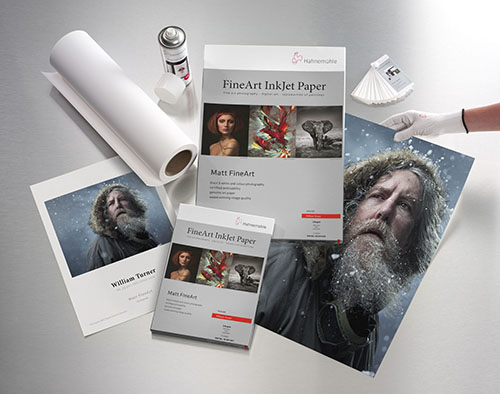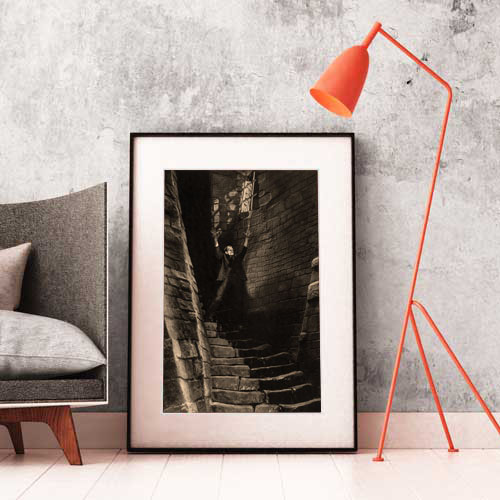Exceptional theatrical publicity shot featuring the archetypal vampire Bela Lugosi (Count Dracula) in one of his iconic poses. This image will look amazing in any room in your home, especially in one of our custom black frames and white matte.
Dracula is a 1931 American pre-Code supernatural horror film directed and co-produced by Tod Browning from a screenplay written by Garrett Fort and starring Bela Lugosi in the titular role. It is based on the 1924 stage play Dracula by Hamilton Deane and John L. Balderston, which in turn is adapted from the 1897 novel Dracula by Bram Stoker. Lugosi portrays Count Dracula, a vampire who emigrates from Transylvania to England and preys upon the blood of living victims, including a young man's fiancée. Produced and distributed by Universal Pictures, Dracula is the first sound film adaptation of the Stoker novel.
Several actors were considered to portray the title character, but Lugosi, who had previously played the role on Broadway, eventually got the part. The film was partially shot on sets at Universal Studios Lot in California, which were reused at night for the filming of Dracula, a concurrently produced Spanish-language version of the story also by Universal. Dracula was a commercial and critical success upon release, and led to several sequels and spin-offs.
It has had a notable influence on popular culture, and Lugosi's portrayal of Dracula established the character as a cultural icon, as well as the archetypal vampire in later works of fiction. In 2000, the film was selected by the United States Library of Congress for preservation in the National Film Registry as "culturally, historically, or aesthetically significant".
On September 29, 1930, Dracula began shooting at Universal City on a $355,050 budget on a 36-day schedule. Tod Browning shot scenes of Dracula's Castle and Borgo Pass all the first week of production. According to numerous accounts, the production is alleged to have been a mostly disorganized affair, with the usually meticulous Tod Browning leaving cinematographer Karl Freund to take over during much of the shoot, making Freund something of an un-credited director on the film.
Dracula was a big gamble for a major Hollywood studio to undertake. In spite of the literary credentials of the source material, it was uncertain if an American audience was prepared for a serious full length supernatural chiller. Though American audiences had been exposed to other chillers before, such as The Cat and the Canary (1927), this was a horror story with no comic relief or trick ending that downplayed the supernatural. Despite this, Dracula proved to be a box office success.
When the film finally premiered at the Roxy Theatre in New York City on February 12, 1931 (released two days later throughout the U.S.), newspapers reported that members of the audiences fainted in shock at the horror on screen. This publicity, shrewdly orchestrated by the film studio, helped ensure people came to see the film, if for no other reason than curiosity. Within 48 hours of its opening at New York's Roxy Theatre, it had sold 50,000 tickets, building a momentum that culminated in a $700,000 profit, the largest of Universal's 1931 releases.
Product Enquiry
Kodak Professional Endura Paper
Kodak Endura papers provide an incredible amount of detail and smooth transition of tones. Designed for the professional photographer in mind, looking for a more traditional photo print style, Kodak Endura provides an extended print life and color gamut almost at the level of a high end fine art paper print.
Archival Matte Paper
Archival Matte Paper, also known as Moab Lasal Photo Matte, is our house stock fine art paper and is an economical favorite for fine art reproductions and photo prints. It features a smooth surface, heavy weight (230 g, 9.5-mil), neutral white, matte paper engineered for accurate color reproduction that provides high contrast and high-resolution output. This paper is acid-free, making it the perfect choice for both photography & fine art reproductions.
Giclee William Turner Paper by Hahnemühle
The William Turner by Hahnemühle is one of the most popular papers used in the Giclee printing industry. This is a 310g natural white mould made natural line paper with 100% rag content making it highly archival. It has a slight coarse texture which gives photos and artwork an elegant look. These fine art paper prints (also known as Giclee) are ordered by galleries, individual artists and photographers. The papers and inks are not only archival but use some of the most accurate print technology for full color prints.
- Giclee prints use very expensive archival pigmented inks.
- Highest level of color gamut available in printing (12 color printing).
- Exceptional black & white printing.
- Fade resistant, pigmented inks which provide a superior color range compared to other types of inks. Widely preferred in fine art and photography circles.
- We ONLY use professional grade fine art and photo paper that resist yellowing and aging.



Framing
We offer wood and metal frames, custom cut & joined to order. Each framed print includes hanging hardware and foamcore backer.
Matting
We use conservation grade 100% virgin alpha-cellulose 2 ply mats with white core. Acid-free and lignin-free, these are both face resistant and meet all conservation quality standards set by the Fine Art Trade Guild. Mats are digitally cut for ultimate precision. The window will be 1/8″ smaller than the print dimensions.
Glazing (Acrylic Glass)
We offer custom cut panes of shatter-proof, acrylic glass, to protect your valuable artwork and prints.
Premium Clear
Framing grade clear acrylic is shatter resistant and lightweight.
Reflection Control
With its matte finish, Tru Vue Reflection Control® Acrylic scatters light to diminish unwanted glare.
Conservation Clear
Tru Vue Conservation Clear® Acrylic is a framing industry staple, blocking up to 99% of UV rays for ultimate protection.
Conservation Reflection Control
Tru Vue Conservation Reflection Control® Acrylic scatters and diffuses light to reduce unwanted glare. Blocks up to 99% of UV rays.







